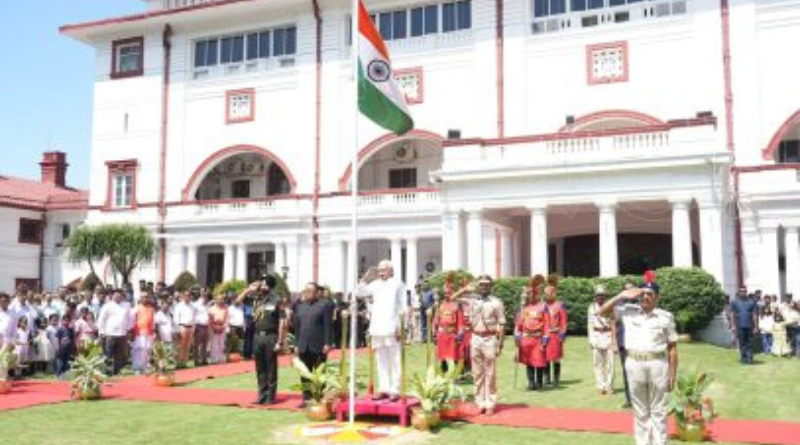Raj Bhavan, Patna, is a colonial-era landmark preserving Bihar’s heritage.
Photo Credit: The Suncity News.

Patna, May 31, 2024: Raj Bhavan, the official residence of the governor of Bihar, stands as one of the most iconic and historically significant buildings in the state capital.
With its stately architecture and colonial charm, the structure continues to evoke the grandeur of a bygone era.
Located in the heart of Patna, it serves as both the official residence and administrative office of the Governor of Bihar.
Over the years, the Building Construction Department has carried out periodic renovations to ensure its upkeep, while carefully preserving its original architectural essence.
Raj Bhavan comprises two sections:
The sprawling premises of the Raj Bhavan are divided into two distinct sections—the residential wing, which houses the Governor, and the administrative complex, known as Rajendra Mandapam.
The latter is the venue for several key official functions, including the swearing-in ceremony of the Bihar Cabinet, oath-taking of the Chief Justice of the Patna High Court, and other major state events.
The construction of Raj Bhavan was completed in 5 years:
Construction of the Raj Bhavan began in 1912 and was completed in 1917.
The building was designed by Joseph Fearis Munnings, a New Zealand-born architect, who also contributed to several other colonial structures in the region.
Before India’s independence, the Raj Bhavan was known as the Government House.
From 1917 to 1920, it served as the official residence of the Lieutenant Governor of Bihar and Odisha, and later, from 1920 to 1936, it housed the governor of Bihar and Odisha.
Following the bifurcation of Bihar and Odisha in 1936, the building became the official residence of the Governor of Bihar.
Today, Raj Bhavan remains a symbol of Bihar’s political and architectural legacy—a timeless blend of history, governance, and grandeur.
Also Read: Seat sharing formula is not finalizing between RJD and Congress in Bihar.
EOM.